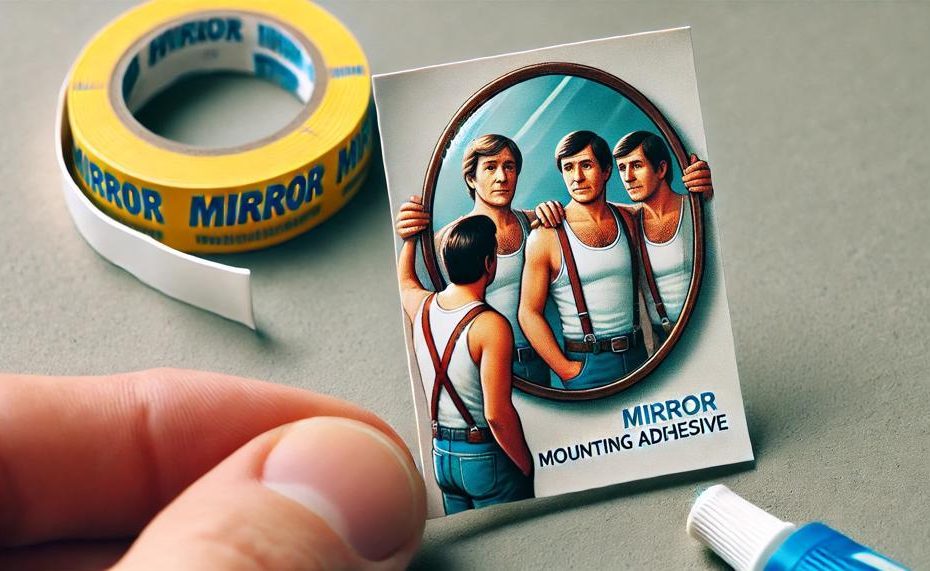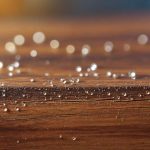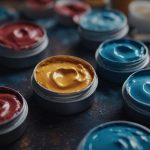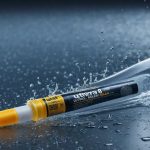Ever wondered how to hang a mirror on your wall without the hassle of nails? You’re in the right place. Whether you’re looking to spruce up your living room, add some style to your bathroom, or simply want a practical solution, gluing a mirror to your wall can be a game-changer.
The process is straightforward, and with the right tools and techniques, you can achieve a clean, seamless look that’s both secure and stylish.
Here’s a sneak peek of what you need to know:
- Prepare Your Wall: Ensure it’s clean and free from any debris.
- Choose the Right Adhesive: Loctite PL 530 Mirror, Marble, andamp; Granite Adhesive is a top choice for a strong, lasting bond.
- Get Some Help: Having an extra pair of hands makes the installation smoother.
- Mind the Conditions: This adhesive is perfect for areas with temperature and humidity changes, like bathrooms and kitchens.
- Extra Support: Use mechanical fasteners at the bottom for added security.
- Precision is Key: Make sure the mirror is straight before securing it, as the adhesive sets quickly and adjustments are tough.
Ready to transform your space with a perfectly placed mirror? Let’s dive into the details and get started on this simple yet impactful home improvement project.
Table of Contents
Best Products For Hanging A Mirror Without Nails
The best products for hanging a mirror on a wall without using nails offer secure and easy solutions. Here’s a detailed look at some of the top options:
Adhesive Strips
Command Large Picture Hanging Strips
- Strength: Can hold up to 16 pounds per set.
- Advantages: Easy to apply and remove, no damage to walls.
- Considerations: Ensure the surface is clean for best adhesion.
Mirror Adhesive
Loctite PL 530 Mirror, Marble, andamp; Granite Adhesive
- Strength: Provides a very strong bond, suitable for heavy mirrors.
- Advantages: Resistant to temperature and humidity changes, making it ideal for bathrooms and kitchens.
- Considerations: Requires support until fully cured (about 48 hours).
Double-Sided Mounting Tape
Scotch Extremely Strong Mounting Tape
- Strength: Can hold up to 30 pounds.
- Advantages: Versatile and easy to use, works on various surfaces.
- Considerations: Make sure to press firmly for a secure bond.
Adhesive Hooks
Command Mirror Hangers
- Strength: Each hook can hold up to 4 pounds.
- Advantages: Simple installation, no tools required.
- Considerations: Best for smaller mirrors or additional support.
Steps for Installation
- Preparation: Clean the wall surface thoroughly to remove dust and grease.
- Apply Adhesive: Follow the product instructions carefully for applying adhesive strips, mounting tape, or adhesive hooks.
- Support the Mirror: Have someone assist you in holding the mirror in place while the adhesive sets.
- Check Alignment: Ensure the mirror is level before final placement. Adhesive products often don’t allow for repositioning.
Mounting Tape
When using mounting tape to attach a mirror to a wall without nails, several key considerations ensure a secure and long-lasting installation:
Wall Preparation
- Clean the Wall: Make sure the wall surface is free from dust, grease, and moisture. Use a mild detergent and water to clean it, then dry thoroughly.
- Smooth Surface: The wall should be smooth for optimal adhesion. Rough or uneven surfaces may hinder the tape’s effectiveness.
Choosing the Right Tape
- Specific Tape for Mirrors: Opt for a mounting tape specifically designed for mirrors. These tapes have higher strength and are tested for mirror weight support.
- Weight Capacity: Verify the weight capacity of the mounting tape to ensure it can handle the mirror’s weight. Overloading the tape can lead to failure.
Application Technique
- Even Distribution: Apply the mounting tape evenly on the back of the mirror. Follow the manufacturer’s guidelines for the amount and placement of the tape.
- Firm Pressure: Press the mirror firmly against the wall to activate the adhesive. Ensuring complete contact is vital for a strong bond.
Curing Time
- Adhesive Curing: Allow the tape to cure as per the manufacturer’s instructions before subjecting the mirror to any additional load. This curing time is crucial for maximum adhesion strength.
Regular Inspection
- Periodic Checks: Regularly inspect the mirror to ensure it remains securely attached. Environmental factors or weight changes might affect the adhesion over time.
Adhesive Strips
Adhesive strips offer a clean, efficient way to attach a mirror to a wall without nails. Here’s how to do it effectively:
Preparation
Clean the wall and mirror surface thoroughly to remove any dust, grease, or dirt. This ensures maximum adhesion.
Choosing the Right Strips
Select adhesive strips specifically designed for mirrors, such as those from 3M Command or other brands known for their reliability.
Applying the Strips:
- Attach the strips to the back of the mirror in a grid pattern, focusing on the edges and the center.
- Ensure even spacing to distribute the weight of the mirror evenly.
Positioning the Mirror:
- Mark the desired position on the wall using a pencil and a level to ensure it’s straight.
- Align the mirror with the marks, then press it firmly against the wall. Apply steady pressure to each section where a strip is attached.
Securing the Mirror:
- Hold the mirror in place for the recommended time specified by the adhesive strip manufacturer to ensure a strong bond.
- Check the mirror periodically to ensure it remains secure, especially within the first 24 hours.
Claw Hooks
Claw hooks offer a reliable and straightforward method for hanging mirrors without nails. They bring several benefits:
| Benefit | Description | Additional Notes |
| Minimal Wall Damage | Leaves small pinholes, easy to patch up | Ideal for renters |
| Ease of Installation | No tools required, quick setup | Perfect for DIY projects |
| Strong Holding Capacity | Supports heavy mirrors effectively | Ensure hooks are rated for the mirror’s weight |
| Versatility | Works on drywall, plaster, and paneling | Adapts to various wall materials |
| Even Weight Distribution | Keeps mirrors level and secure | Use two hooks for best results |
Mounting Putty
The advantages of using mounting putty to attach a mirror to a wall without nails are multifaceted and beneficial for many situations. Here’s a detailed look:
| Advantage | Description | Benefit |
| Minimal Wall Damage | Leaves virtually no marks or holes on the wall | Ideal for renters or temporary setups |
| Clean and Seamless Look | No need for visible hardware on the wall or mirror | Maintains a tidy and aesthetically pleasing appearance |
| Ease of Use | Does not require tools like hammers, nails, or drills | Simple and hassle-free installation process |
| Secure Hold | Capable of holding the weight of the mirror with proper selection | Ensures safety and stability |
| Flexibility in Hanging Options | Works with various mounting aids and configurations | Versatile for different hanging needs |
Velcro Tape
To securely attach a mirror to a wall without the need for nails, Velcro tape provides a reliable and damage-free solution. Here’s how you can do it:
| Step | Action | Details |
| 1 | Preparation | Clean and dry the surfaces of the mirror and wall. |
| 2 | Choose Velcro Tape | Select heavy-duty Velcro tape with adequate weight capacity. |
| 3 | Cut Tape | Cut the Velcro tape into multiple strips for stability. |
| 4 | Apply Tape | Attach loop side to the mirror and hook side to the wall. |
| 5 | Mount Mirror | Align and press the mirror firmly against the wall. |
| 6 | Check Stability | Ensure a secure hold and add more strips if needed. |
Picture Hangers
When it comes to hanging a mirror on the wall without nails, several innovative options provide a strong hold without damaging your walls. Here are the top types of picture hangers suitable for this task:
| Type | Description | Usage Tips |
| Dual Head Picture Hangers | These hangers look like nails with two heads, and they work with sawtooth or ring-style hardware. | Use them with mirrors that have compatible hardware. Position them correctly to ensure balance and support. |
| Adhesive Picture Hangers | These hangers use strong adhesives to stick to the wall, offering a no-damage hanging solution. | Ensure the wall surface is clean and dry before applying. Follow the manufacturer’s weight guidelines for the best results. |
| No-Nail Picture Hangers | Specifically designed to avoid the use of nails, these hangers come in various designs to support different weights. | Choose the appropriate type based on the weight of the mirror. Consider using multiple hangers for larger mirrors. |
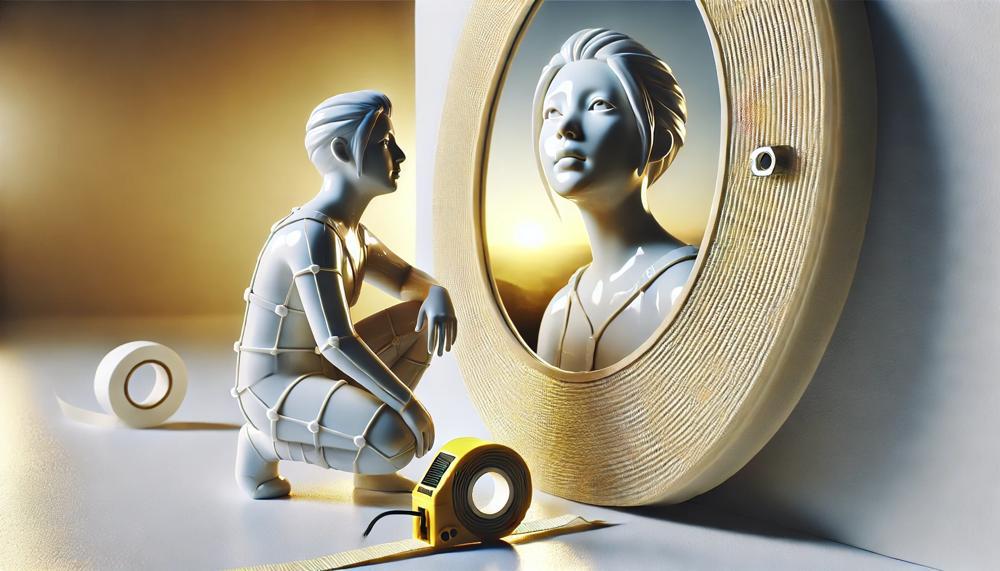
Summarized: How To Hang A Mirror Without Nails
Hanging a mirror without nails involves selecting the right adhesive and ensuring proper surface preparation for a secure bond.
Choose the Right Adhesive
Opt for construction-grade silicone adhesive or heavy-duty double-sided mounting tape.
These adhesives are known for their strong bonding capabilities and durability.
Surface Preparation:
- Ensure both the wall and the back of the mirror are clean, dry, and free from dust and debris.
- For better adhesion, lightly sand the back of the mirror.
Application of Adhesive:
- Follow the manufacturer’s instructions meticulously.
- Apply an even layer of adhesive on both the mirror and the wall.
- Allow the adhesive to cure as per the recommended time before mounting the mirror.
Safety Precautions
Wear gloves and work in a well-ventilated area when handling adhesives.
Conclusion
Gluing a mirror to your wall without nails is an innovative and practical solution that enhances your space without the hassle of traditional methods. By meticulously preparing your wall and choosing the right adhesive, such as the Loctite PL 530 Mirror, Marble, andamp; Granite Adhesive, you can ensure a strong and lasting bond. This method is especially beneficial in areas with fluctuating temperatures and humidity, like bathrooms and kitchens.
Enlisting an extra pair of hands can simplify the installation process, ensuring the mirror is perfectly aligned before the adhesive sets. For added peace of mind, incorporating mechanical fasteners at the bottom provides additional support. The key to success lies in precision and patience, as the adhesive sets quickly and adjustments are challenging post-application.
Various products like adhesive strips, double-sided mounting tape, and adhesive hooks offer versatile and reliable alternatives, each catering to different weights and types of mirrors. Regular inspection ensures the mirror remains securely attached over time.
Embrace this seamless approach to mirror installation to transform your living space, achieving a clean, stylish look without damaging your walls.

